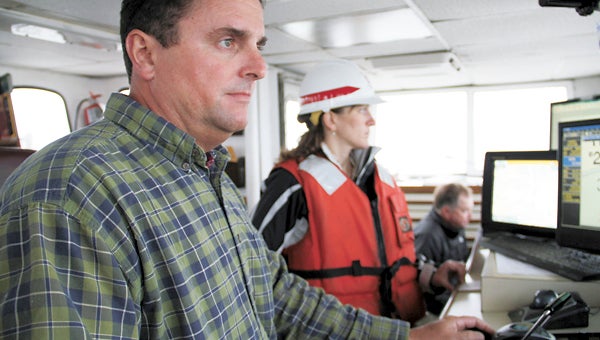Cleaning out the creek
Published 9:37 pm Thursday, April 25, 2013

Aboard the hopper dredge Currituck last Saturday, Martin Willis, its captain, gives a project brief to Karen Guerra, mechanical engineer from the U.S. Army Corps of Engineers Norfolk District and project manager of the Bennett’s Creek dredging project. (U.S. Army Photo/Pamela Spaugy)
Sequestration might be creating havoc elsewhere, like in airports with all those furloughed air traffic controllers, but it has spared one partially federally funded Suffolk project: the dredging of Bennett’s Creek.
According to U.S. Army Corps of Engineers Norfolk Division spokeswoman Pamela K. Spaugy, the $144,000 project to remove 4,000 cubic yards of material is 59 percent federally funded. The remaining 41 percent is local funds.
Phase 1 of the project started last Saturday, Spaugy said, with the arrival of the Wilmington, N.C.-based corps dredge the Currituck, and ended with the vessel’s departure Friday.
It was to provide a minimum depth of 3.5 feet, and when the corps returns at the end of the year, Phase 2 will increase that to eight feet at low tide, according to a news release.
“The Army Corps last dredged in 2004, and the city had it dredged in 2006,” Spaugy said.
The work follows a corps survey recommending the removal from Bennett’s Creek of 35,000 cubic yards of sediment every five years, she said.
By Spaugy’s calculations, this week’s effort removed the equivalent of 350 dump trucks of material, deposited by natural shoaling and exacerbated by Superstorm Sandy.
It was Sandy’s contribution to the build-up last October that assured federal funding for the project under the Disaster Relief Appropriations Act, possibly sparing it from sequestration, she added.
Life aboard the Currituck is not for the lazy. According to Spaugy’s account, two crews of five pull 12-hour shifts to work the vessel around the clock.
“A kind of vacuum” on either side of the Currituck sucks the sediment off the creek floor.
Sand and water is pumped into a massive hopper before the water flows back out, leaving 300 cubic yards of sand for a full load.
The Currituck placed each load of sand at Portsmouth’s Craney Island.
Crewmembers like it when folks show their appreciation, Spaugy says. “They had some boaters that called in and thanked them for being there,” she said, noting that Bennett’s Creek eventually leads to the Atlantic Ocean.
“Our goal is to offer safe, reliable navigation channels, which are critical to the nation’s economy.”
Suffolk Mayor Linda T. Johnson stated, “We are very pleased that the Army Corps of Engineers partnered with the City of Suffolk to dredge Bennett’s Creek. This project is a great benefit to the many residents who use Bennett’s Creek for both work and pleasure.”






